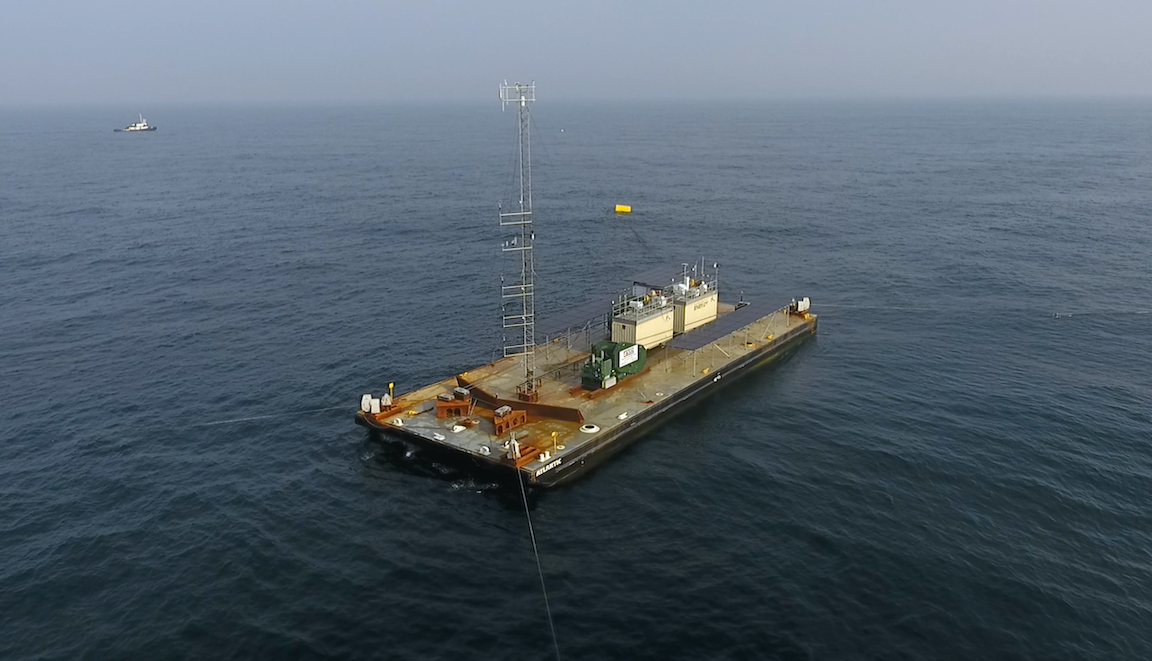Wind Energy
Wind Energy
Harnessing wind as a
renewable energy resource
Harnessing wind as a
renewable energy resource
Accomplishments—FY 2024

Wind energy represents more than 10 percent of the nation’s electricity mix, making it an important part of the nation’s energy portfolio. Wind has the power to help maintain grid stability and resilience, create new jobs, and make energy more affordable for everyone; however, there are still challenges to navigate. Pacific Northwest National Laboratory’s (PNNL) accomplishments in fiscal year (FY) 2024 help address these remaining challenges.
Developed models and tools to support the grid
Understanding the risks and challenges that come with wind farm development, grid integration, and long-term operations and maintenance helps lower the cost of wind energy while maintaining grid reliability. Models and tools PNNL developed in FY 2024 helped researchers quickly leverage massive amounts of existing data to peer into the future and identify potential barriers to start addressing now.
For example, PNNL created a new tool, GridPACK-Wind, to add to its existing GridPACK framework. The tool will help grid engineers and planners prepare to integrate more inverter-based energy generation—something that’s important for long-term grid health and reliability—while avoiding short-term risks and disruptions. PNNL also developed the National Wind Power Database, which addresses an industry need for more wind power production data to support decision-making by stakeholders, such as policymakers and grid planners. PNNL also a created a publicly available platform to model, process, and share this data.
Filled critical data gaps to aid decision-making
PNNL wind researchers also collect real-world data that can be used to validate and fine-tune models and tools, as well as to help industry stakeholders evaluate risks and make decisions about wind farm development. By filling critical data gaps, PNNL gives the wind industry a low-risk head start toward its development and deployment goals.

In FY 2024, the latest phase of the Wind Forecast Improvement Project (WFIP3), co-led by PNNL, used innovative instrumentation both on land and offshore to address an industry need for better wind and weather forecasting. The overarching WFIP goal is to drive down the cost of wind-generated electricity and has saved millions of dollars so far. In response to a need expressed by the wind industry for platforms to test new technologies offshore, PNNL also instrumented an additional research buoy as part of its Lidar Buoy Program. In partnership with the U.S. Geological Survey, PNNL made significant progress in developing new avian monitoring technologys designed to collect data that will inform wind farm siting decisions and help mitigate risks to bird and bat populations.
Supported a domestic supply chain and workforce
To support a growing U.S. wind energy portfolio, the industry will need a robust domestic supply chain to provide raw materials and manufacturing capabilities, along with a skilled workforce to build and maintain offshore wind infrastructure. PNNL collaborates with stakeholders to find solutions that facilitate growth, lower costs, and provide economic opportunities and benefits for local communities.
For example, PNNL was selected by two companies to provide technical assistance as part of phase 2 of the American-Made FLoating Offshore Wind ReadINess (FLOWIN) Prize. PelaStar, a Glosten Company, which PNNL already supported during phase 1, selected PNNL again in FY 2024 to help expand the company’s workforce impact analyses, identify feasible locations for deployment of its tension leg platform technology, and develop strategies for meeting workforce needs. Principle Power selected PNNL to help create a workforce development plan to support a domestic supply chain for the company’s floating substructure technology. In FY 2024, PNNL researchers also led an investigation into supply chain needs for transmission infrastructure, such as high-voltage transformers, export cables, AC substations, and converter stations.
Provided thought leadership to shape the future of wind energy
Outside of their technical work, individual PNNL wind researchers are active in the wind industry, participating in and contributing to multiple advisory committees, boards of directors, working groups, research plans, and more. Their knowledge and guidance help bridge the gap between technical research and real-world application, supporting the alignment of research activities with areas of greatest industry need. In FY 2024, for example:
- PNNL researchers contributed to the historic Regional Wildlife Science Collaborative for Offshore Wind Research Plan, designed to provide the science needed to advance offshore wind energy development on the Atlantic Coast.
- Wind Energy Program Manager and Operational Systems Engineering Group Leader Alicia Mahon accepted two new advisory roles related to offshore wind energy and engineering, joining the advisory committee of the Pacific Offshore Wind Consortium and the external advisory panel for the Ocean and Resources Engineering department at the University of Hawai‘i at Mānoa.
- PNNL researchers were invited to participate as content contributors and coauthors on various subsections of a chapter about "Floating Offshore Wind Energy Infrastructure" in the Adaptation and the Built Environment section of the Seventh Oregon Climate Assessment. Collaborating with other contributors, they are providing an overview of floating offshore wind infrastructure and technology likely to be deployed off the coast of Oregon, as well as an overview of potential environmental effects of such development.
- Community Values and Ocean Co-Use Portfolio Lead Katie Arkema was appointed to the Governor of Washington’s Coastal and Marine Advisory Council and is serving on the council’s Offshore Wind Technical Subcommittee. At the national scale, she was selected as one of 11 lead authors for the first U.S. National Nature Assessment.
- Distributed Wind Portfolio Lead Danielle Preziuso served as one of two operating agents for the International Energy Agency Wind Technology Collaboration Programme’s Task 41, a group of researchers from numerous member countries and associations dedicated to advancing wind technology as a cost-effective and reliable distributed energy resource.
PNNL continues to deliver results that significantly advance the Department of Energy Wind Energy Technologies Office mission and the nation’s broader energy policy objectives. Learn more about PNNL’s wind energy research and subscribe to the Wind@PNNL newsletter for updates.